OUR VERY OWN SUNSPOTS OBSERVATION!!!
In doing sunspot observations, you can choose to make use of the projection method (i.e. you project the unfiltered picture of the sun onto a white board or something similar. Please see Q & A page for more details of this method), or you can use a solar filter (as described in detail here). If you have any questions regarding the method described here, please refer to the Q & A page.
Observing sunspots with a telescope and solar filter
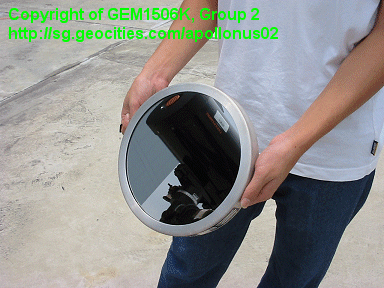
Solar Filter
The solar filter is a special mirror put over in front of the telescope to shield off most of the visual lights and other rays otherwise detrimental to the eye, when looking at the sun through the telescope. Without it, in a few seconds, the retina of the eye is irreversibly damaged.
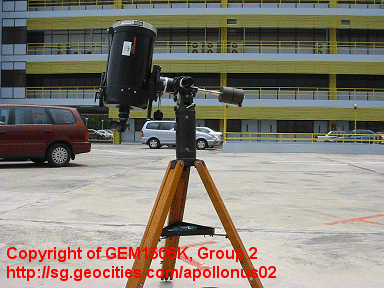
Celestron c8 Newtonian Reflector
The model of the telescope used by the Ngee Ann Polytechnic students. The observation was done in an open space with no overhead obstructions, and on a sunny day at around 1.00pm. As the sun moves across the sky, the telescope has to be adjusted constantly in order for the sun to be viewed directly in the middle through the eyepiece.
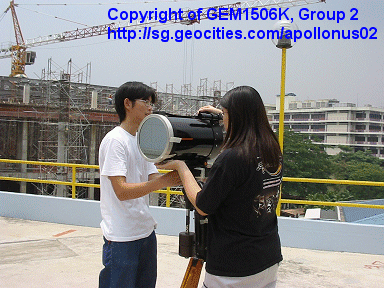
Jun Kai & Amy fixing up the telescope
The telescope has two components that required two people to fix up together... Thank you Jun Kai and Amy! J The equipment can be quite bulky to be carried around.
Sunspots..
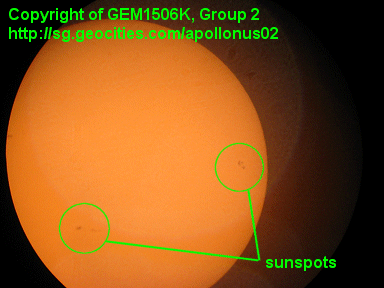
image 1
The filtered image of the sun through the telescope, taken with a digital camera at the eyepiece. Notice the dark spots on the orange surface; they are what we are looking for... SUNSPOTS!
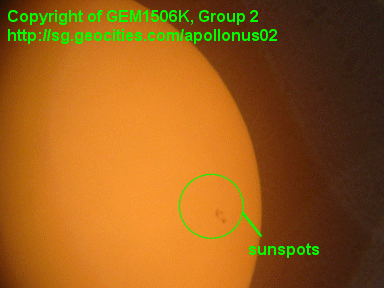
image 2
A zoom-in on one of the sunspots after changing the eyepiece from a bigger one to a smaller one.
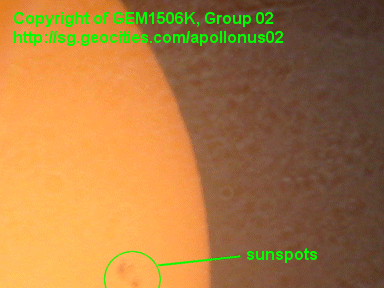
image 3
Another closer view of the sunspots, though bigger, but not as sharp.
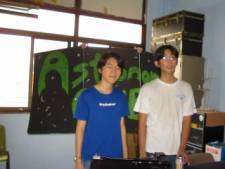
Daniel and Jun Kai
The president of the Ngee Ann Polytechnic Astronomy Club, Daniel (left), and Jun Kai, the main telescope operator.
The NUS Heavenly Mathematics Project Group 02 members would like to express their thanks to the Astronomy Club for their logistics support and human resource.
For more details on the Ngee Ann Polytechnic Astronomy Club, please visit their website at http://starline.deep-ice.com/